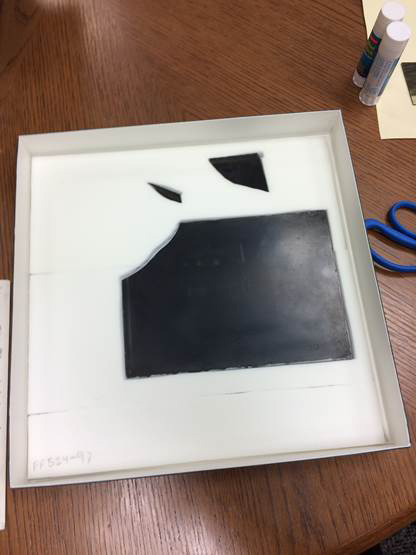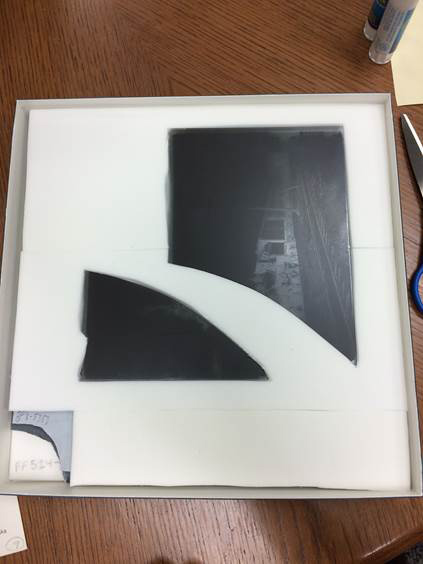Putting It All Together: The Assembly and Digitization of Glass Plate Negatives
Hello. This week I am featuring work done by one of our Collection Facilitators, Haiden Nelson. In our Photo Archive we have a large collection of glass plate negatives (mainly in the Bostwick-Frohardt collection) that have survived all this time. However, some didn’t make it through in one piece, but lucky for them Haiden has lovingly taken them into her care. Haiden has started to work on some of the broken negatives: piecing them back together to scan, getting the images up online with descriptions, and creating a safe place to rehouse each little piece. We are adding these images online as well as prints from the Bostwick-Frohardt collection, so even though we are done with the other negatives there are still new things to see!
Below is what Haiden has to say about her work so far!
Enjoy!
Becky
Glass plate negatives are the most fragile kind of photographic media in our collection, well, besides the explosive nitrate film. Some of the glass plates from the Bostwick-Frohardt Collection were broken before they could be scanned and added to the website. However, when they are put back together like a puzzle, the scan is sharp and clear with a small line where the glass was broken. To prevent further damage, I have been rehousing the negatives in custom-cut frames to keep all the little pieces from knocking into each other.

View Scanned Image Made from This Plate »
This image shows the telegraph office at the 1898 Trans-Miss Expo. The building must have been sponsored by the Bemis Bag Company since it is covered in “BEMIS” and statues of cats in bags. The broken part of this negative is in the lower left corner.
The boxes are actually film reel boxes, but they are just the right size for glass plates.

View Scanned Image Made from This Plate »
This image shows a Santa Fe steam engine at a small depot in Hartman, Colorado. The break in the glass is visible as the line going across the locomotive.
After they are put back together, the broken plates are a window into Old Omaha. It’s a view we might not have had if we don’t preserve these images for the future.
Until next time!

